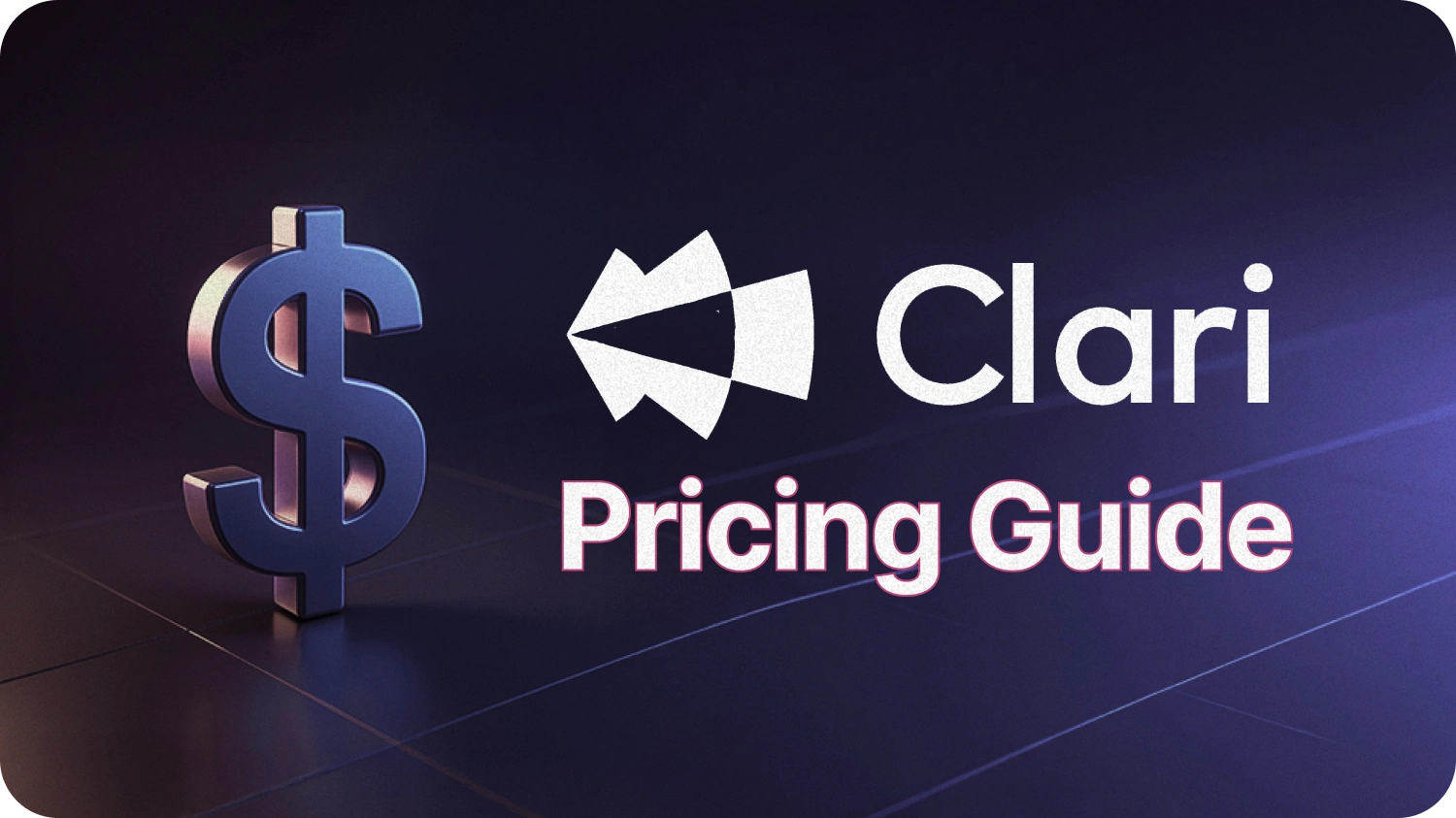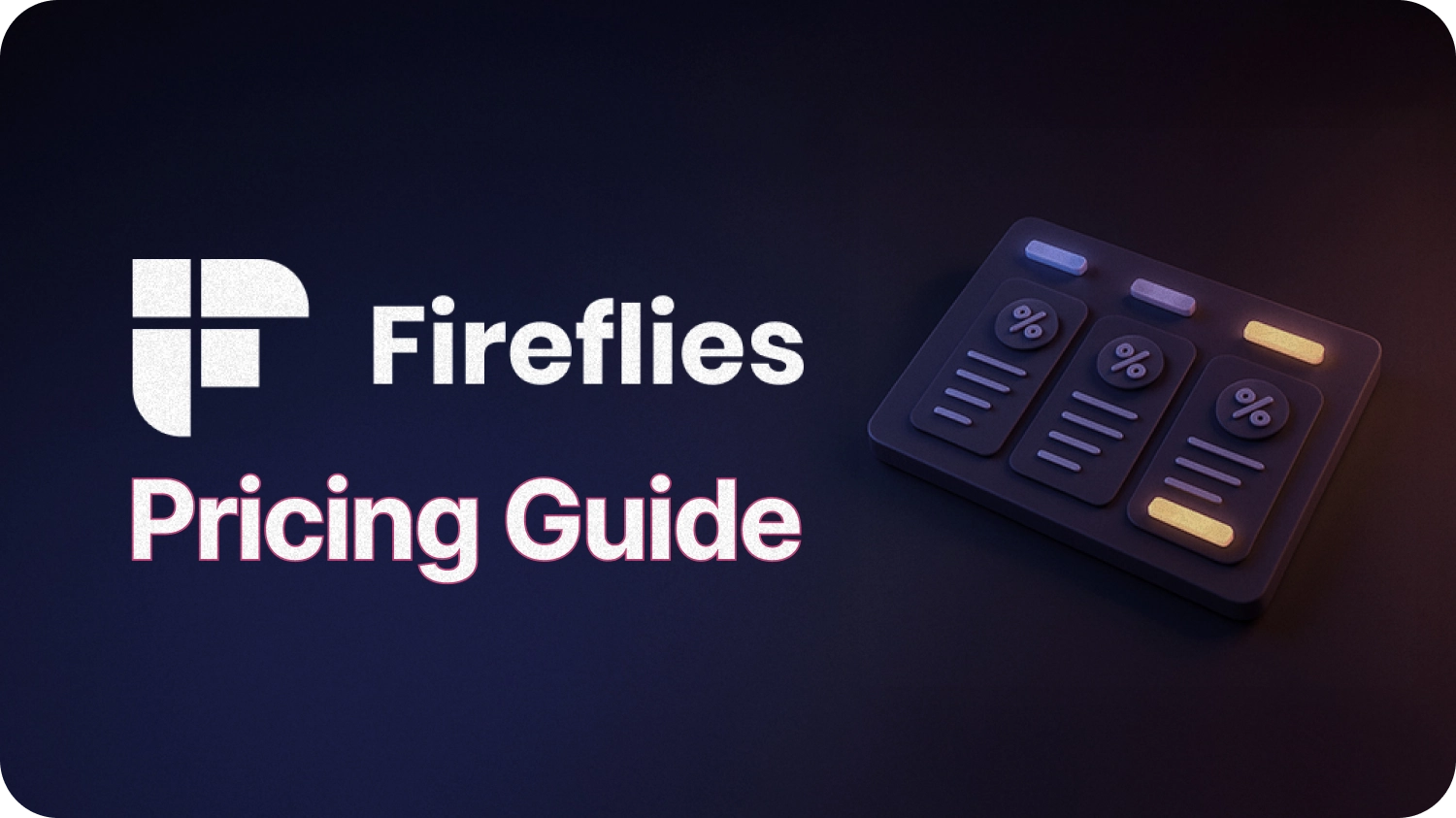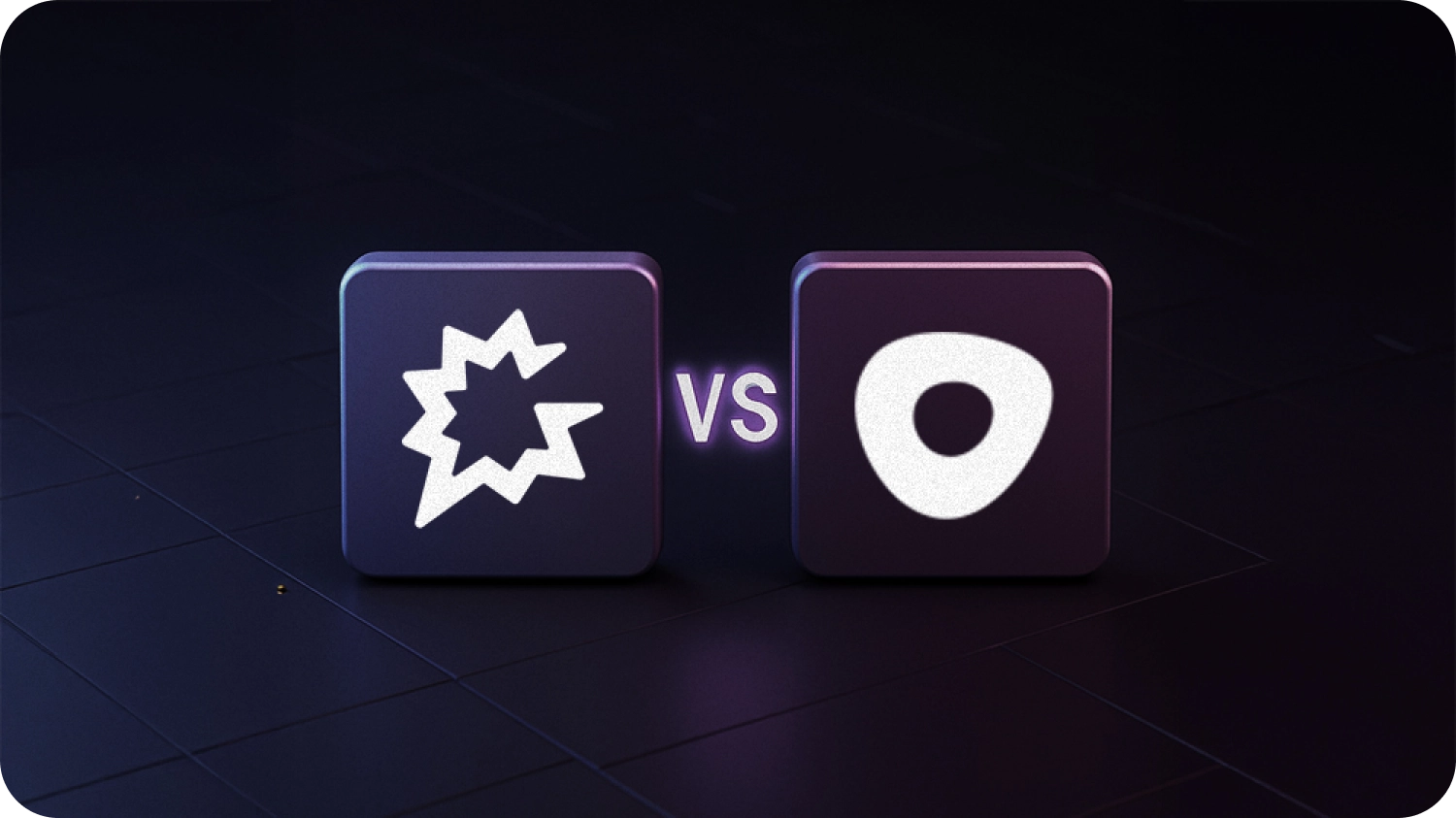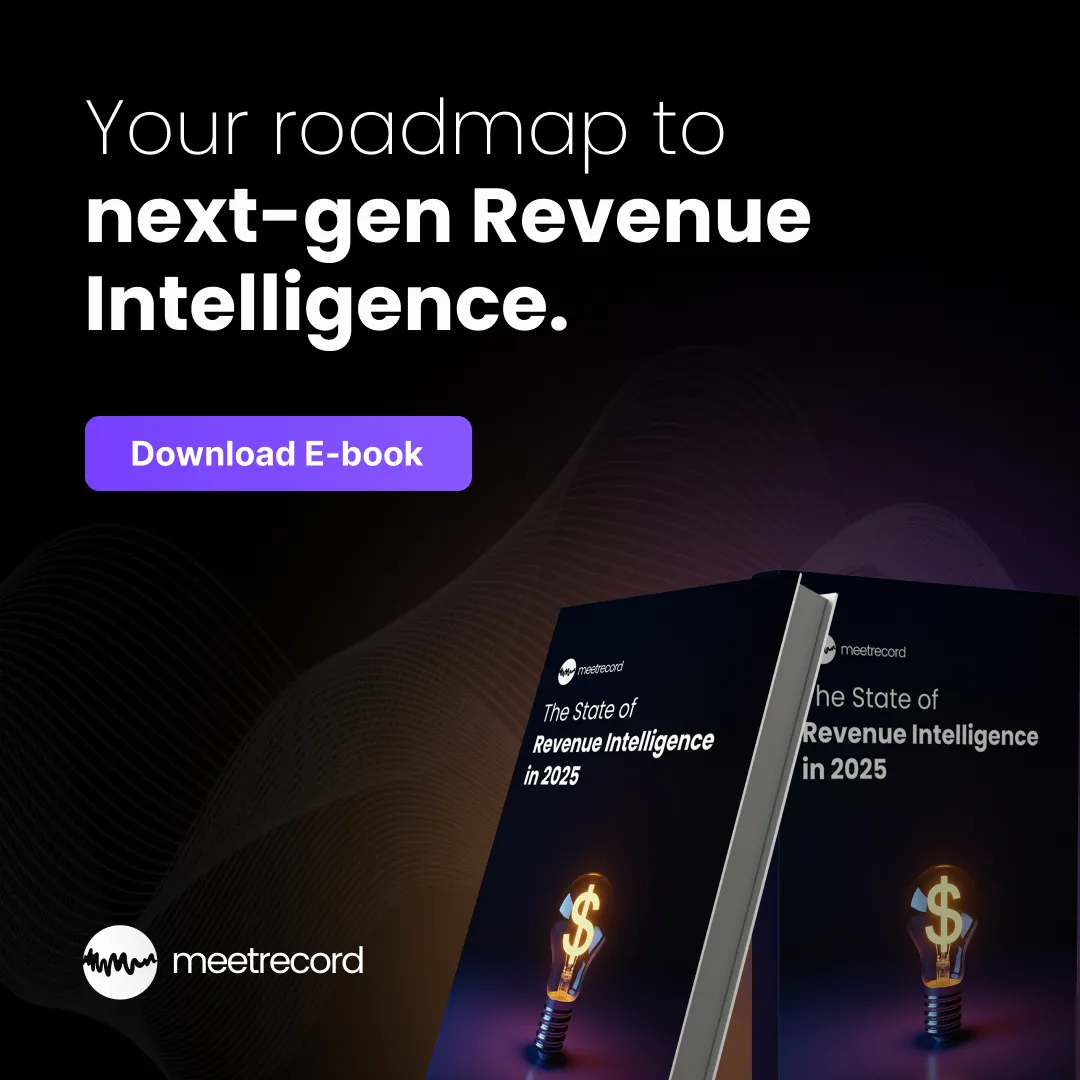Most sales teams hate their CRMs.
According to InsideSales, the average sales rep spends 14 hours out of a 40-hour week actually selling.
That’s over 35% of their time not selling, not even getting coached, but cleaning up CRM data.
In a year like 2025, when quotas are rising and hiring is on pause, that’s a cost you can’t afford.
CRM automation can help turn things around. It can free up reps’ time so that they can focus on high-agency activities like prospecting, getting feedback, or closing deals.
The best sales teams out there already know this. And they treat automation like a headcount.
In this blog, I’ll show you 15 real CRM automation examples that reduce admin, improve data quality, and keep deals moving without adding another tool.
What is CRM Automation?
According to Salesforce’s 2024 State of Sales report, 79% of high-performing sales teams use automation to eliminate low-value tasks like manual data entry, admin follow-ups, and internal status updates.
Spending more time on managing your CRM data isn’t an indication of being good at sales.
Automation can ensure that you spend fewer hours inside the CRM and still be good at forecasting calls with clean pipeline data, analyzing call notes, and following up diligently.
More often than not, CRM automation can help you:
We break down the nuances of what each of these looks like in detail in this CRM automation guide, from first-touch workflows to pipeline diagnostics.
Quick Overview of CRM Automation Across Teams
CRM automation is your go-to-market (GTM) operating system.
But it only works if marketing, sales, CS, and RevOps are running on the same data.
Think of it less like automating tasks and more like automating alignment. When everyone pulls from the same pipe and trusts what’s in the system, you don’t need another sync to double-check the truth.
1. How Does Marketing Use CRM Automation?
Marketing teams use CRM automation to capture, qualify, and route leads faster. They also leverage it to personalize outreach or trigger campaigns based on real-time buyer signals.
For marketing, CRM automation doesn’t stop at routing MQLs. It’s valuable for them when the automation contributes to accurate lead data, smooth handoffs (with sales), and zero lag.
When a prospect fills out a demo form on the website, for instance, automation should score the lead, track UTMs, route it to the right AE, and trigger a personalized sequence.
Great teams go further. They exclude churned users, re-engage cold leads, and track attribution without bothering sales.
2. How Does Sales Use CRM Automation?
Sales teams use CRM automation to log calls, update deal stages, and send follow-up reminders. It helps reps focus on selling instead of manual data entry.
For sales, automation takes care of the tasks reps avoid: logging calls, updating deal status, and tracking follow-ups.
It also ensures stalled deals don’t go unnoticed, next steps are clearly visible, and that managers can see deal risks without following up with reps for every activity.
But automation only works when it serves the rep first. The moment it feels like extra admin, it gets ignored.
The best automation enables reps to pull insights directly from sales calls, identify objections, and map contact roles directly into the CRM.
3. How Does Customer Success Use CRM Automation?
CS teams use CRM automation to track account health, improve renewals, and detect churn risks early. It helps them stay proactive with follow-ups and reduce manual work.
CRM automation can help CS reps stay ahead of churn, their worst nightmare.
And it starts with visibility, such as tracking drops in product usage, low health scores, or contract end dates.
Good workflow automation can help CSMs prepare for strategic QBRs, identify dormant accounts, and alert them when a champion leaves.
For the CS team, the goal is simple: detect churn signals early and act while there’s still time to stem the bleeding.
4. How Does RevOps Use CRM Automation?
RevOps teams use CRM automation to manage data hygiene, enforce process rules, and improve handoffs across sales, marketing, and CS. It keeps the revenue teams aligned and efficient.
RevOps is where CRM automation either stalls or scales.
These teams define the logic, guardrails, and workflows that hold the entire GTM engine together. When they fail the automation, they can lose trust.
It can also lead to messy data across the board, inaccurate forecasts, and poor adoption.
The best RevOps leaders think in systems, not shortcuts. They test an automation before rolling it out org-wise and build processes that reps actually want to follow.
CRM automation isn’t a one-time project. It’s infrastructure. And RevOps is the team keeping it running clean.
Want a quick-reference guide to build smarter CRM workflows? Download our free guide to CRM Automation Cheatsheet. It’s full with plug-and-play ideas, tools, and use cases that save your reps hours every week.
15 Real CRM Automation Examples That Save Hours Every Week
Most sales leaders agree: CRM automation is best when it takes work off the rep’s plate.
The examples below show how real teams are using it to reclaim time, reduce manual work, upkeep CRM data, and improve the sales productivity.
Here’s a quick look at all the CRM automation use cases that save time, boost rep productivity, and keep your pipeline clean:
1. Auto-Assign Leads Based on Location or Campaign
Lead routing delays are a quiet killer. By the time a qualified lead lands in your inbox, the buying intent may already be cold.
Automation solves this by assigning leads instantly based on real-time signals like geography, campaign source, or activity scores.
Example Scenario: LeanData + Salesforce Automation Setup
Imagine you’re a RevOps team at a mid-market SaaS company using Salesforce integration with LeanData.
You can set up a logic in LeanData to route inbound demo requests based on UTM parameters for campaign attribution, IP geolocation for regional assignment, and a lead behavior score based on pricing page visits.
Once routed, your reps will get a Slack alert and the CRM logs the routing path for visibility.

Business Outcomes
2. Automate Meeting Notes and Action Items Into CRM
Many sales reps lose deals because they forget to follow up. And it’s clear why:
80% of sales require at least five follow-ups after a meeting. However, 44% of reps usually give up after just one follow-up.
A lot of times, this is because there’s no smart way for reps to update the meeting notes, action items, and contact context into the CRM.
Thankfully, automation changes that by logging what matters without you having to lift a finger.
Example Scenario: MeetRecord + HubSpot Automation Setup
Let’s say your sales team uses MeetRecord in integration with HubSpot. After every sales call, MeetRecord automatically captures the transcript, summarizes key action items, identifies speaker roles, and syncs next steps directly into HubSpot fields.
If the call mentions a new stakeholder or a key date, it’s automatically tagged in the opportunity record.

Business Outcomes
3. Trigger Coaching Workflows Based on Deal Signals
Most sales coaching happens too late, usually after the deal is lost.
Automation makes it possible to coach reps in real-time, by flagging early signs of deal risk based on CRM activity and conversation signals. This shifts coaching from reactive to proactive.
Example Scenario: MeetRecord + Salesforce Automation Setup
Imagine a RevOps leader configuring a workflow where MeetRecord analyzes calls for sentiment and deal signals.
If a deal is stuck in the same stage for over 14 days and the last call includes phrases like “need more time” or “re-evaluating budget,” MeetRecord auto-triggers a task in Salesforce for the manager to review the deal.
This workflow can also push a Slack alert with a call snippet for quick context.

Business Outcomes
4. Automate Follow-Up Reminders
Most reps don’t follow up as diligently because it’s easy to forget when they are juggling a dozen other priorities.
Automated reminders can help reps follow up proactively and stay on top of their prospects’ minds.
Example Scenario: HubSpot Sequences + Zapier + Slack Setup
Let’s say a sales team uses HubSpot Sequences for outbound prospecting.
They can use Zapier integration to monitor when a prospect hasn’t replied within 48 hours since the last email.
When such a condition is met, Zapier can trigger a Slack notification to the rep, reminding them to follow up on a conversation.

Business Outcomes
5. Reassign Dormant or Inactive Deals
Not every deal dies because the buyer ghosts you. Some deals stall because reps drop the ball or focus on bigger accounts.
Automation helps you identify such dormant deals and reassign them before you lose them forever.
Example Scenario: Salesforce Flow + Zoho CRM
Imagine a RevOps team configuring a rule in Salesforce Flow. If an opportunity hasn’t had any logged activity (e.g., calls, emails, meetings) in the past 10 days, the deal is automatically reassigned to the team lead or an SDR for re-warming.
In such an event, Zoho CRM can log the reassignment, and Slack notifies the new owner about the last-touch details.

Business Outcomes
6. Trigger Renewal Workflows
Most customer churn happens in Q4.
Churnkey reports that this is usually due to seasonality, budget cuts, and changes in customer habits due to holidays. CRM automation can help you get ahead of renewals before they become a second thought.
Example Scenario: Gainsight + HubSpot Automated Workflow Setup
Let’s say your CS team uses Gainsight along with HubSpot. You can configure a workflow to create a renewal task for the CSMs to schedule QBRs 90 days before a contract end date.
Gainsight can even flag an account for a health review. For instance, if a customer’s recent NPS or usage metrics are below the benchmark, the workflow adds an escalation tag and alerts the account manager in Slack.

Business Outcomes
7. Auto-Tag Contacts from Call Transcripts
If you're still relying on reps to manually tag stakeholders in the CRM, you're probably missing key influencers.
In complex B2B deals, automation can help you capture not just who’s in a call, but who matters in the deal.
Example Scenario: MeetRecord + Salesforce (or HubSpot)
If your sales team uses MeetRecord to record calls and automate insights into Salesforce (or HubSpot), you can get the call transcripts, speaker identification, and AI-powered behavioral signals.
For instance, if a prospect pushes back on pricing or references internal buying processes, MeetRecord automatically tags that contact as a potential “Decision Maker” or “Procurement Gatekeeper.”
Your reps don’t have to do anything manually; MeetRecord tags the contact and syncs the call recording automatically.

Business Outcomes
8. Update Deal Stages
Forecasting often falls apart when reps gloss over updating deal stages manually.
One of the most common gaps is between ‘Proposal Sent’ and ‘Deal Progressed.’
Automation uses real-time document engagement as a signal to move deals forward without waiting for manual updates.
Example Scenario: PandaDoc + Salesforce (or HubSpot)
A lot of sales teams use PandaDoc for proposals and Salesforce as their CRM.
When a prospect opens the proposal, PandaDoc logs the view event. This event then triggers a stage change in Salesforce from ‘Proposal Sent’ to ‘In Negotiation.’
Similarly, Salesforce can add a timestamped note to the activity log and send a Slack alert to the right rep to follow up with the prospect within 24 hours.

Business Outcomes
9. Alert When Key Accounts Turn Inactive
It’s hard for reps to notice a high-stakes account go quiet unless they keep a close tab on it.
With CRM automation, you can set up early warning signals and engage proactively before the prospects ghost you.
Example Scenario: MeetRecord + Slack + Salesforce
Let’s say a RevOps team sets up MeetRecord to track engagement across meetings and calls.
If there’s been no logged activity for over 14 days on an account tagged as “High Priority” in Salesforce, MeetRecord can send a Slack alert to the rep and their manager.
This alert can include a quick summary of the last call and a nudge to re-engage.

Business Outcomes
10. Sync Customer Notes into CRM
Most deal context doesn’t necessarily live in a CRM. It’s scattered all over call transcripts, Google Docs, or email threads.
But if you can set up a workflow to automate customer notes directly into the CRM, you can retain the deal’s context under the same roof, and be easily accessible right when you need them.
Example Scenario: Zapier + Notion + Salesforce
Imagine you have a globally distributed remote sales team that logs discovery call notes in Notion after calls.
Using Zapier, they can create a workflow that can retrieve the call notes saved in a specific Notion database and sync and timestamp them into Salesforce.
When it’s time for a demo or negotiation, the AEs can see the original buyer goals, objections, or competitors mentioned without having to research elsewhere.

Business Outcomes
11. CRM Sales Automation
Most sales teams prefer fewer manual steps between a sales call and the next step.
CRM automation makes that possible by triggering actions based on what was actually said on a call instead of guessing what that should be.
Example Scenario: MeetRecord + HubSpot (or Salesforce)
MeetRecord captures post-call insights in real time. When a prospect mentions "budget approval next week" or "need to loop in procurement," MeetRecord automatically creates a task in HubSpot (or Salesforce) and assigns it to the right rep.
It also logs the call summary and flags sentiments like hesitation or pricing pushback, if detected in the call.

Business Outcomes
12. Automated Handoff and Field Validation
RevOps teams are often drowned in requests to “fix” CRM workflows. Most of these problems stem from poor handoffs, low-quality data, or incomplete CRM fields. Automation can enforce business logic to fix these issues without any friction.
Example Scenario: MeetRecord + Salesforce Flow
Let’s say you use MeetRecord + Salesforce Flow to check required fields before an opportunity moves stages.
If a rep doesn’t tag a “Decision Maker” or forgets to log the most recent activity, the deal simply doesn’t move further.
You can also set similar rules to auto-fill product interest based on conversation insights from MeetRecord.

Business Outcomes
13. CRM Marketing Automation
Marketing automation isn't limited to configuring email sequences.
The most effective teams use CRM data and buyer signals to trigger campaigns that align with real buying intent.
Example Scenario: MeetRecord + HubSpot Automation Setup
Let’s say a B2B SaaS company uses HubSpot to create a smart list of contacts who had pricing discussions on sales calls recorded in MeetRecord.
If a prospect from the said company views the pricing page but doesn't convert within seven days, they can set up a HubSpot automation to trigger a follow-up email along with ROI case studies personalized to their industry.

Business Outcomes
14. CRM Customer Success Automation
CS teams spend hours manually tracking account activity. Automating risk detection and outreach planning changes that. The key is tying CRM health signals to behavioral data.
Example Scenario: Gainsight + Salesforce
Let’s say a CS team configured rules to alert them if:
- No login in 14 days
- Low NPS score
- No meeting activity from AE or CSM in the past 30 days
For this kind of situation, you can create an automation in Gainsight to trigger a Slack alert, create a follow-up task, and push a customer health survey.
You can also use MeetRecord to analyze disengaged behavior (e.g., short answers, low talk-time) to validate these signals.

Business Outcomes
15. Auto-Create Win-Loss Summaries
Post-deal analysis often falls through the cracks because once a deal closes, most reps move on to the next account and managers focus on the new pipeline.
With CRM automation, you can create a win-loss analysis as soon as an opportunity is marked Closed-Won or Closed-Lost.
Example Scenario: MeetRecord + Slack
Imagine a sales enablement team that uses MeetRecord to auto-generate summaries of what worked or failed during the deal cycle.
These summaries are based on call transcript tags (e.g., objection types, competitor mentions, decision criteria).
With an automation in place between MeetRecord and Slack, you can automatically send the summary to the rep, their manager, and marketing for everyone’s alignment.

Business Outcomes
Want even more ideas? Explore 100+ real-world CRM automation use cases to find what fits your team best.
Best Practices to Get CRM Automation Right in 2025
CRM automation can save hours, clean up your pipeline, and surface deals that would’ve otherwise died quietly.
But if you automate the wrong things (or automate for the sake of it), you’ll just move your problems faster without solving them.
Here are five best practices to use automation smartly to scale your processes:
1. Start With Your Bottlenecks
Don’t start by asking, “What can this tool automate?” Instead, ask, “What’s costing us time or deals every week?”
It could be follow-ups that take too much effort, reps not updating CRM, or call notes buried in Google Docs.
Once you know where the biggest frictions are, you can look for the right automation tool, not the other way around.
2. Test Before Roll Out
Automation is like code; if it breaks, it takes your processes down along with it.
Don’t set up a routing rule or forecast update logic and hope for the best. Always test a new automated workflow in a sandbox, run it with a smaller group, and watch out for edge cases.
Bad automation logic can corrupt your CRM faster than human errors ever could.
3. Involve All Stakeholders
The best automation isn’t top-down or bottoms-up. It’s built with the people who actually use the CRM daily.
For example, reps know what slows them down, which fields are useless, and which sequences feel formulaic.
Let them have a say when building a new automation logic. This way, you can build workflows that are useful, sustainable, and loved by everyone.
4. Monitor Outcomes
Don’t stop once the automation starts working well. Usually, it’s only the baseline.
Proactively track the time your team saved and watch how it affects your pipeline hygiene.
Does stage data improve? Do follow-ups get done on time? Is coaching happening earlier?
You can’t improve what you don’t measure. And you can’t justify automation spending unless it actually drives sales outcomes.
5. Don’t Automate What You Don’t Understand
This is the fastest way to wreck your CRM.
If you don’t understand how your renewal workflows behave manually, don’t try to automate them. If your lead scoring logic is a black box, don’t auto-assign leads based on it.
Automating broken logic doesn’t scale results. It scales chaos.
Every automation you set up should have a human fallback, a defined owner, and a clear reason to exist.
CRM automation in 2025 isn’t about doing more. It’s about doing less of the wrong stuff, so your team can finally do the right work again.
Automation Should Free Reps, Not Frustrate Them
CRM automation doesn’t necessarily remove the human from the sales process. It liberates them from the need to perform mundane, repetitive tasks.
Automation gets the admin tasks out of the way so that reps can do what actually drives revenue: selling.
That’s where platforms like MeetRecord come in. It connects sales conversations directly to your CRM, pipeline, and coaching workflows to save your team hours every week.
If you want to see how revenue intelligence works with CRM automation to help your team sell better, book a demo with MeetRecord.
Frequently Asked Questions
CRM automation uses rules and triggers to handle repetitive tasks like lead assignment, follow-up emails, and data entry. It connects tools like email, chat, and calendar with your CRM so actions happen automatically based on customer behavior or internal workflows.
CRM automation saves time, reduces manual errors, and helps teams respond faster. It keeps your data clean, improves follow-up consistency, and gives managers better visibility into the sales pipeline without constant updates from reps.
To set up automated workflows, start by identifying repetitive tasks. Then define triggers (like form submissions or deal stage changes) and actions (like sending emails or updating fields). Most CRMs offer visual workflow builders to map this out with minimal coding.
CRM automation runs tasks based on logic and timing, while manual CRM management relies on people to update records or send reminders. Automation is faster, more consistent, and scalable, whereas manual processes are slower and prone to human error.
Yes, CRM automation is worth it for most growing businesses. It boosts team productivity, shortens response times, and helps you scale operations without adding headcount. The ROI becomes clear when your sales and support teams can focus on high-value tasks instead of admin work.


.svg)

.webp)







